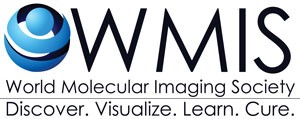CULVER CITY, CA., September 20, 2018 – World renowned scientists and physicians presented their preclinical and clinical research in neurological cancers and disorders at the 11th annual World Molecular Imaging Congress (WMIC), September 12-15, 2018 in Seattle, WA, USA.
Jonathan T.C. Liu, PhD, University of Washington, was recognized as the presenter of a top abstract for his work focused on two major clinical applications: oral cancer detection and neurosurgical guidance.
“The purpose of this project has been to develop a handheld “optical sectioning” microscope that enables real-time video-rate microscopic imaging of living tissues on a patient without having to obtain an invasive biopsy and wait for histopathology to be performed,” said Jonathan T.C. Liu, PhD, University of Washington.
Liu went on to explain that for oral cancers, the vision is that eventually, all dentists in the world will have a portable “tumor pen” that allows them to zoom in on suspicious lesions to screen for early-stage cancers. Liu believes the problem now is that most suspicious lesions are actually benign so dentists and clinicians are hesitant to biopsy a lesion until it is too late and the cancer may be at a late and incurable stage.
For neurosurgeons, the problem is that it is difficult to know how far to cut when removing a brain tumor, which can lead to rapid recurrence. The microscope used in this research can potentially provide information that is much more quantitative than existing tools in order to optimize patient outcomes after tumor debulking procedures.
In 2018, Liu’s team placed their first device at the Memorial Sloan-Kettering Cancer Center in New York (with collaborator, Dr. Milind Rajadhyaksha) for feasibility studies related to oral cancer detection. They also placed a second device at the Barrow Neurological Institute in Phoenix (with collaborator, Dr. Nader Sanai) for initial studies related to guiding brain tumor resection procedures.
“We believe that our in vivo microscopy tools have the potential to improve the early detection and surgical treatments of a variety of diseases such as oral, skin, brain, head and neck cancers, as well as epilepsy and other neurodegenerative diseases,” said Liu.
Twan Lammers, PhD, RWTH University, Aachen, Germany, was also recognized for his work in exploring how sonopermeation can be combined with nanomedicine formulations to help deliver drug more efficiently to pathological sites. When combined with blood brain barrier (BBB) sonopermeation, nanomedicines can be employed to deliver high amounts of cargo to brain tumors, and to ensure their sustained release within the disease lesion for prolonged periods of time. In addition to this, the use of nanomedicine formulations substantially lowers systemic side effects, which also creates significant patient benefit.
In this study, Lammers’ team employed multiple different optical imaging techniques to evaluate the accumulation and penetration of drug carriers in the bran. He plans to continue and extend his research with hopes to develop such sonopermeation protocols for children suffering from brain tumors.
“Keeping the very high need for better treatments for brain cancer and neurodegenerative disorders in mind, we expect sonopermeation protocols to be gradually implemented in the clinic in the next couple of years. The combination of sonopermeation with nanomedicine formulations will likely follow shortly afterwards, as multiple advanced drugs (such as proteins, nucleic acids) rely on nanocarrier materials for efficient in vivo delivery and efficacy,” said Lammers.
Additional neuroscience presentations highlighted at WMIC include: “Acoustically targeted chemogenetics for noninvasive neuromodulation,” presented by Jerzy Szablowski, PhD, California Institute of Technology; and “Mapping the brain’s structure-function relationship using hemoglobin,” by author Adam Bauer, PhD, Washington University in St. Louis.
ABOUT WORLD MOLECULAR IMAGING SOCIETY
The WMIS is dedicated to developing and promoting translational research through multimodality molecular imaging. The education and abstract-driven WMIC is the annual meeting of the WMIS and provides a unique setting for scientists and clinicians with very diverse backgrounds to interact, present, and follow cutting-edge advances in the rapidly expanding field of molecular imaging that impacts nearly every biomedical discipline. Industry exhibits at the congress included corporations who have created the latest advances in preclinical and clinical imaging approaches and equipment, providing a complete molecular imaging educational technology showcase. For more information: www.wmis.org
###
Read the press release on PRWeb, here.
Contact: LAUREN WHITMAN
Phone: 865-308-2312
Email: lwhitman@wmis.org
